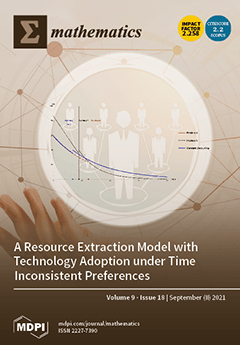In this paper, a dynamic model of cytosolic calcium concentration (
) oscillations is established for mast cells (MCs). This model includes the cytoplasm (Cyt), endoplasmic reticulum (ER), mitochondria (Mt), and functional region (μd), formed by the
[...] Read more.
In this paper, a dynamic model of cytosolic calcium concentration (
) oscillations is established for mast cells (MCs). This model includes the cytoplasm (Cyt), endoplasmic reticulum (ER), mitochondria (Mt), and functional region (μd), formed by the ER and Mt, also with
channels in these cellular compartments. By this model, we calculate
oscillations that are driven by distinct mechanisms at varying
(degradation coefficient of inositol 1,4,5-trisphosphate,
and production coefficient of
), as well as at different distances between the ER and Mt (ER–Mt distance). The model predicts that (i) Mt and μd compartments can reduce the amplitude of
oscillations, and cause the ER to release less
during oscillations; (ii) with increasing cytosolic
concentration (
), the amplitude of oscillations increases (from 0.1 μM to several μM), but the frequency decreases; (iii) the frequency of
oscillations decreases as the ER–Mt distance increases. What is more, when the ER–Mt distance is greater than 65 nm, the μd compartment has less effect on
oscillations. These results suggest that Mt, μd, and
can all affect the amplitude and frequency of
oscillations, but the mechanism is different. The model provides a comprehensive mechanism for predicting cytosolic
concentration oscillations in mast cells, and a theoretical basis for calcium oscillations observed in mast cells, so as to better understand the regulation mechanism of calcium signaling in mast cells.
Full article





